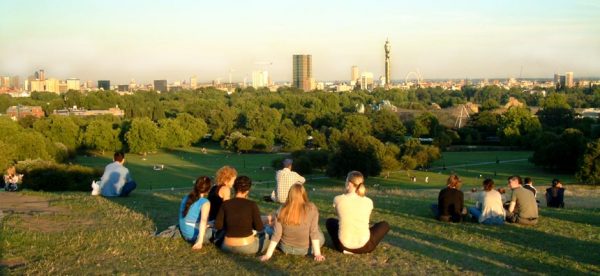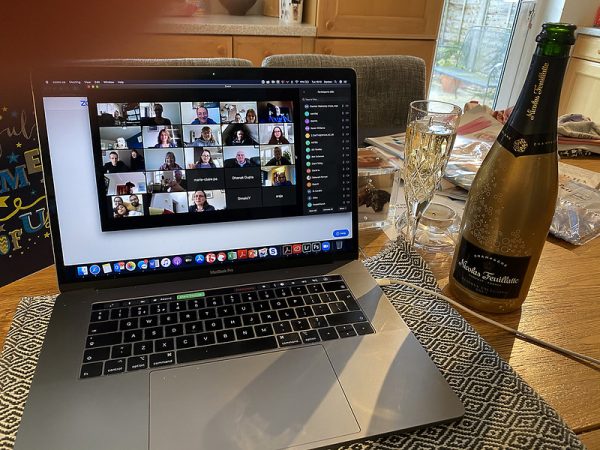Day 68 in the Big Brother house! It’s hard to imagine that at the beginning of all this it got dark at 6pm and we still had the heating on. During that time many of us have had to adapt the ways in which we connect with friends, families and colleagues, occupy our solitude and in some cases make space for it.
As researchers on solitude, we have come to think of solitude and sociality as co-dependent. Our experiences of solitude are shaped by our experiences of social connection and vice versa. Here I offer some reflections on my own experiences, living with two others in London, and how it has got me thinking about the solitude and sociality of life in the time of COVID-19.
Work
For someone whose job revolves around very solitary practices of reading and writing, one might imagine that a lockdown should be a time of great productivity. But in the first few weeks of the pandemic I was struck by how hard it was to maintain focus. I am used to working from home, but rarely for an entire day, preferring instead to spread my working hours across two, three or sometimes four locations, making use of my home, my office at Queen Mary, as well as London’s numerous libraries and cafes. Such spaces serve different practical function in terms of the books, resources, comfort and caffeine on offer.
But living in lockdown has also emphasised the unacknowledged sociality of these places and the extent to which I lean on them to feed off the productivity, surveillance, support and conviviality of others.
They bring to mind our colleague Leo Coleman’s descriptions of urban solitude and the ways in which cities offer opportunities, in Coleman’s words, to ‘be alone with others’. Many of these moments – our daily commute, solitary lunch breaks, times spent reading in parks etc – may not appear social on the surface but offer an opportunity to be with others in an anonymous but no less present way.

When walking or running in the park I have been surprised how rejuvenating the presence of strangers has been. Now that the British people have been afforded ‘unlimited’ sunbathing and exercise, our local park has been busier than ever. Though I can’t relocate my desk there, it has become by far the most significant public space in my life and I’m glad for the abundance of others.
Difficulties in maintaining concentration have undoubtedly been compounded by news and anxiety about the pandemic in the outside world. This is after all a crisis in the age of the ‘attention economy’ and the devices which allow us to work from home are also portals to endless updates, analyses, dire predictions and accounts of suspicious visits to Barnard Castle. Though it is important to stay informed, it is easy to forget how the live feeds compete for our attention in ways that can be extremely counterproductive.
In How to Do Nothing: Resisting the Attention Economy, artist Jenny Odell argues that the attention economy is not only a drain on our capacity to concentrate but also a threat to our sense of self and even free will.
‘Its not just that living in a constant state of distraction is unpleasant, or that a life without wilful thought and action is an impoverished one,’ Odell writes, ‘a social body that can’t concentrate or communicate is like a person who can’t think and act.’
Odell’s antidote to the attention economy is to carve out space for what she calls ‘deep attention’, to become engrossed not with a single task or problem per say but rather to a sense of space, community and local ecology. One of the pleasures of lockdown has certainly been the numerous discoveries made around our local area, including skateparks, orchards, swan’s nests and more. But learning to disconnect from the news cycle was as much a process of adaptation to the new normal than newfound powers of deep attention. Productivity, as ever, has come in waves rather than any constant flow.
Sociality
Outside of work hours, life in lockdown has been far from solitary. Video-calling technology is hardly new, but until now I have only used it sparingly. The surge in popularity of platforms such as Zoom and Houseparty have in no way superseded what me might call ‘traditional’ image and text based social media. These still run apace.
But instead the conference call has often stood in as proxy for conventional social gatherings. Afterwork drinks on a Friday, coffee breaks, Sunday lunch, boardgames, parties, birthdays, music festivals have all been attempted with remarkable ingenuity and varying success. My housemates and I have discovered the pleasures of dancing at a laptop screen until the early hours of the morning and seeing people halfway across the world doing the same.

Such activities seem to blur the lines between solitary and shared experience, offering a unique situation where we experience something of the world of the other, but are excluded from many aspects of a truly shared environment: the atmosphere of a room, sideways glances, cross-conversation, the touch and feel of others. I’m interested in this simulacrum of normality and the ways in which social conventions have evolved to replicate the old whilst accommodating the new.
As restrictions have eased, enthusiasm for digital socialising seems to be waning, but I often wonder how these technologies will be integrated into our lives post lockdown. Will we still dial in our laptop-based friends once the pubs reopen?
Did someone mention the pub? For many, this social hub seems to play an important role in their collective imagination. A symbol of life before lockdown and a potential marker of a return to normalcy. Its immediate offering of food drink, friends and even strangers seem to be obvious.
But just as the Zoom call might make us aware of what we are missing, I wonder if the return to such places might engender a further awareness of those subtle elements which we have previously taken for granted, the sounds, smells and chance encounters of a busy room. But I suspect any potential ethnographers or phenomenologists of the pub experience will have to act quickly. One of the things about returning to normality is that its relative novelty is extremely short lived.
Solitude
I am fortunate enough to have spent lockdown in a house of three, with my partner and housemate. For the most part, we have synchronised into the rhythm of each other’s lives finding ways to occupy our free time, with food, games, sports, crafts and conversation.
As such, complete solitude has not been thrust upon us, but is something we all make time for.
Though the rare pleasure of having the house to oneself is only ever fleeting in lockdown, I find such moments are most enjoyable when they are the counterpoint to a busy and hectic life.
There hasn’t been much FOMO during lockdown, but this also negates the possibility of the joy of missing out. Some time alone has of course been necessary to navigate the extraordinary nature of the last few months and the varying emotions that come with it, but I am grateful to be able escape solitude as well as to retreat into it.
Our project recently sent out a call for public testimonies about solitude (if you’re interested in contributing, you can do so here) and I’m interested to discover more about the different ways in which people are experiencing the solitude and strange sociality of these times. For now at least, I certainly long for the company of a crowd over my own.
Charlie Williams is a postdoctoral research fellow on the ‘Pathologies of Solitude’ project at Queen Mary University of London.